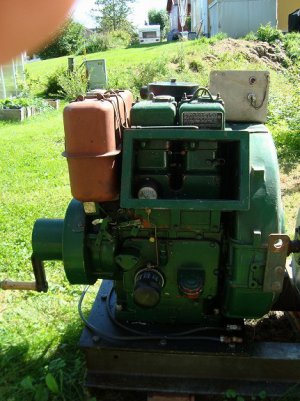

The slow-running engines were noteworthy for their longevity and reliability some ran continuously with only minimum maintenance for years or even decades. Many were exported for use in countries worldwide. Lister’s CS engines were popular choices for powering electric generators, irrigation pumps and other agricultural and industrial machines.

These were followed by the 27-3 in 1931 and the 3-1 CD and CE engines in 1933. It was a single-cylinder engine and produced 9hp. introduced its own design of a “CS” (cold start) diesel engine in 1929 – the Lister 9-1. Production of locomotives ceased in 1968 Auto-Trucks were produced until 1973. In 1926, lightweight narrow-gauge railway locomotives were developed for use in brickworks and on peat bogs, and the Lister Auto-Truck was introduced to move materials around factories, railroad stations, shipping docks, etc. Large numbers of these engines were produced for the British government during World War I.

acquired the rights to manufacture gasoline-fueled engines based on the designs of engines produced by the Stover Manufacturing and Engine Co. The kill switch for the Petter diesel, which dates from about 1986. Towards the end of the century, the company attained considerable success manufacturing and selling milk churns and wooden barrels for butter, sheep shearing machinery and the Alexandra Cream Separator developed by Danish engineer Mikael Pedersen. The firm manufactured agricultural machinery. Lister-Petter engines have a long and distinguished history, dating back to 1867, when Robert Ashton Lister established R.A. The engine is equipped with an electric starting system.Īn indication of the engine’s durability is that the company recommends that the engine be considered for a major overhaul after 5,000 hours of operation. The crankcase holds 2.9 quarts of lubricating oil. At a 75 percent load of 2,500rpm, the engine is rated to consume 1.9 pints of diesel fuel per hour. The engine has a direct-injection fuel system. The single-cylinder, air-cooled engine has a 304cc capacity, with a 3-inch bore, a 2.625-inch stroke, and 18.51:1 compression. It is an AC1 (Series 2) engine, number 50263, and a member of the A Range, which includes engines AA1, AC1, AC1 (Series 2), AD1 and AD2. Harold’s Petter engine is a compact unit – 17.9 inches long, 17.2 inches wide and 17.9 inches high. had a small Petter diesel engine for sale, he purchased it and belted it to a generator that could be tied to his workshop’s electrical system to maintain the building’s heating and lighting systems in the event of a power outage. Upon learning that his friend Richard Kepler Sr. Later, in retirement in a rural area, Harold wanted to have a backup system to support the electrical system in his workshop. Image: Courtesy of Gas Engine Magazine Staff


 0 kommentar(er)
0 kommentar(er)
